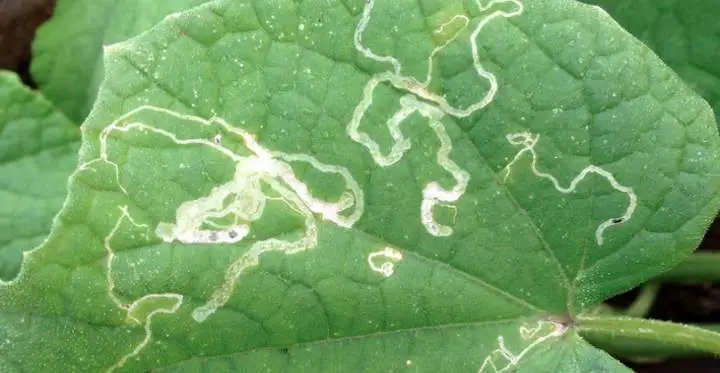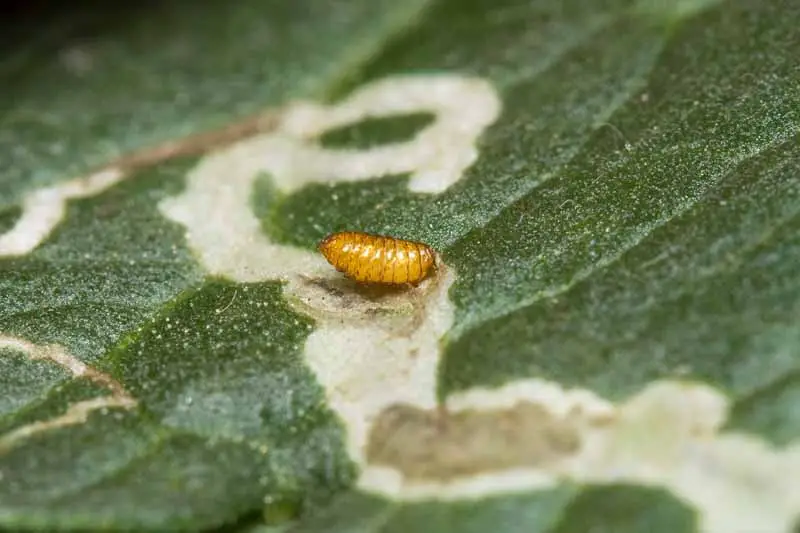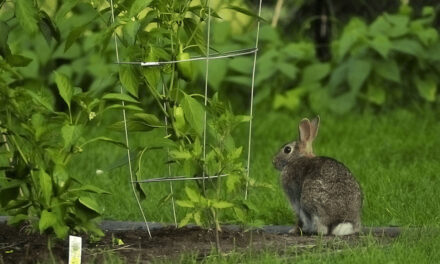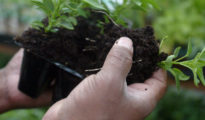Leaf miners are tiny insects that feed on the internal tissues of leaves, creating a characteristic meandering pattern that is often visible on the leaf surface. They are a common pest of plants in both agricultural and natural settings, and can cause significant damage to crops and ornamental plants. In this blog post, we will explore the world of leaf miners, including their life cycle, the plants they affect, and how to get rid of leaf miners.

What are leaf miners?
Leaf miners are insects that feed on the internal tissues of leaves. They belong to a number of different insect families, including moths, flies, and beetles. The damage caused by leaf miners is caused by the larval stage of the insect, which feeds on the leaf tissue as it grows and develops. The meandering pattern that is visible on the leaf surface is caused by the larva as it moves through the leaf, consuming the tissue as it goes.
Life cycle of leaf miners
The life cycle of leaf miners varies depending on the species, but most follow a similar pattern. The adult female will lay eggs on or near the surface of a leaf, and when the eggs hatch, the larvae will burrow into the leaf tissue and begin feeding. The larval stage can last for several weeks, during which time the insect will grow and develop. When the larva is fully developed, it will pupate within the leaf or in the soil, and eventually emerge as an adult insect. The adult will then mate and repeat the cycle by laying eggs on a new leaf.
Plants affected by leaf miners
Leaf miners can affect a wide variety of plants, including vegetables, fruits, and ornamental plants. Some of the most commonly affected plants include:
- Citrus trees
- Tomatoes
- Squash
- Melons
- Spinach
- Roses
- Chrysanthemums
- Holly
- Birch trees
Symptoms of leaf miner damage
The most obvious symptom of leaf miner damage is the meandering pattern that is visible on the surface of the leaf. This pattern is caused by the larva as it moves through the leaf, consuming the tissue as it goes. In addition to the meandering pattern, other symptoms of leaf miner damage can include:
- Stunted growth
- Yellowing or browning of leaves
- Premature leaf drop
- Reduced crop yield
Methods of controlling leaf miners
There are several methods that can be used to control leaf miners, including:
- Cultural control: This involves practices that reduce the likelihood of leaf miner infestations, such as crop rotation, removing and destroying infested plant material, and planting resistant varieties.
- Biological control: This involves the use of natural enemies of leaf miners, such as parasitic wasps and predatory beetles, to control populations.
- Chemical control: This involves the use of insecticides to control leaf miner populations. However, care should be taken when using insecticides, as they can harm beneficial insects and pollinators.
- Physical control: This involves the use of physical barriers, such as row covers or netting, to prevent leaf miners from accessing plants.
Preventing leaf miner infestations

Prevention is the key to avoiding leaf miner infestations. Some of the most effective methods for preventing leaf miner infestations include:
- Planting resistant varieties: Some plants are more resistant to leaf miners than others. When selecting plants for your garden, choose varieties that are known to be resistant to leaf miner damage.
- Practicing good sanitation: Remove and destroy any infested plant material to prevent the spread of leaf miners.
- Using physical barriers: Cover plants with row covers or netting to prevent leaf miners from accessing
- Maintaining healthy plants: Healthy plants are less susceptible to insect damage, so be sure to provide your plants with proper nutrition, watering, and sunlight.
- Monitoring your plants: Regularly inspect your plants for signs of leaf miner damage. Early detection can help prevent the spread of infestations.
- Implementing integrated pest management (IPM) strategies: IPM is a holistic approach to pest management that combines multiple methods, including cultural, biological, chemical, and physical control. By using a combination of methods, you can effectively control leaf miners while minimizing the use of pesticides.
Leaf miners are a common pest of plants that can cause significant damage to crops and ornamental plants. However, with proper prevention and control measures, you can reduce the likelihood of infestations and minimize the impact of leaf miner damage. By practicing good sanitation, selecting resistant varieties, using physical barriers, maintaining healthy plants, and monitoring your plants, you can effectively control leaf miners and protect your plants from their damage. If you do need to use insecticides, be sure to follow all instructions carefully and use them only as a last resort. With these strategies in place, you can enjoy healthy, beautiful plants without the threat of leaf miners.



















